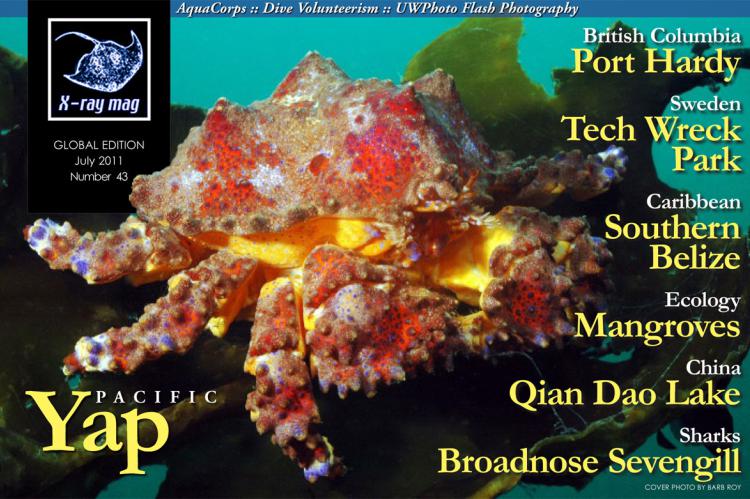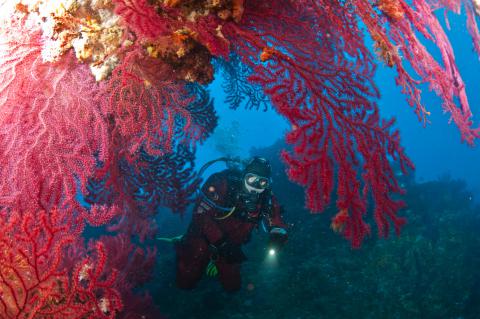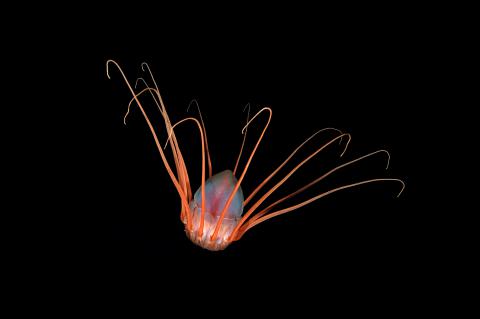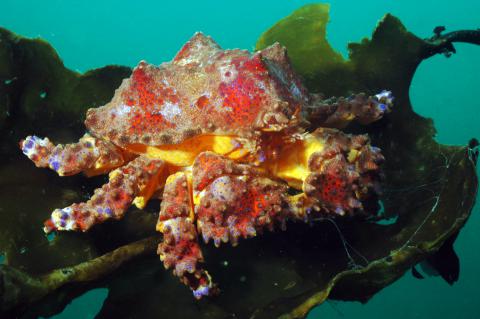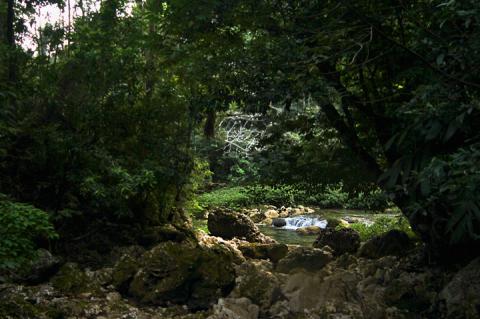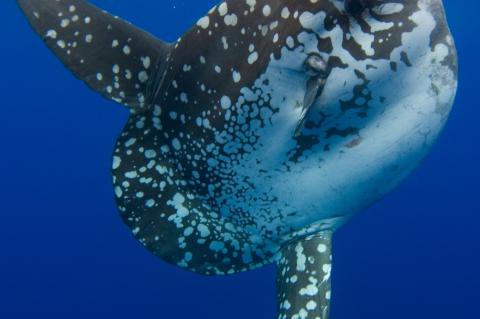X-Ray Mag #43
Daniel Brinckmann and Scott Johnson on the wonders of Yap; Barb Roy and Wayne Grant on liveaboard diving on the Nautilus Swell in Port Hardy, BC, Canada; Dive team, Kelly LaClaire and Kate Clark, on diving Southern Belize; Elaine Kwee on dive volunteerism; Brian Keegan on a new tech wreck park in Sweden; Tyge Dahl Hermansen on mangroves; Aaron Gekoski on the broadnose sevengill shark in South Africa; AquaCorps Bob Halstead discusses the buddy system; Flash photography by Lawson Wood; Qian Dao Lake in China with Don Silcock; plus news and discoveries, equipment news, photo and video equipment, dive books, shark tales, whale tales and much more...
Main features in this issue include:
Mangroves - Nurseries of the Sea
Mangrove forests are significant habitats that exist throughout the tropical belt across the globe. Mangroves are adapted to the specific terms that exist in intertidal marine zones.
In America, New Zealand and Australia mangroves extend to the subtropical zone, and they have their range limits at the most southern point of Australia.
On Your Own: The Buddy System Rebutted
Buddies are not essential for a safe dive. On the contrary, buddies often increase the risk of a dive, either directly through unpredictable or unreliable actions, or indirectly, through an unfounded belief that security is enhanced by numbers alone, regardless of the training or state of mind of the buddy. In most instances, a competent solo diver would be much safer than the average buddy dive.
Obviously, this definition represents the ideal, and upon honest examination, it’s clear that it has little to do with the reality as practiced by most divers. The truth is that on most dives, the buddy system fails.
Periphylla —Aliens of the Deep
The jet-black rubber RIB was running flat out in the February night. We were sweeping past the Mongstad oil refinery at the Norwegian west-coast, just south of Gulen Dive Resort, and the clock was approaching midnight. Apart from the lights in the distance, the visibility was zero, and we were navigating solely on GPS, chart plotter and radar.
The crown jellies, Coronatae, belong to the Scyphozoans, a class of jellyfish counting some 200 species, many of them stunningly beautiful.
Port Hardy (British Columbia) aboard the Nautilus Swell
It wasn’t until Wayne and I were actually leaving Port Hardy aboard the new liveaboard dive boat, the Nautilus Swell, that I realized how much I missed this area of British Columbia. The beauty of a calm ocean at sunset with fresh air all around and the tranquility of stillness allowed the hustle and bustle of city life to simply melt away.
Al Spilde, a seasoned mariner for over 25 years and very familiar with this region, was our captain for the journey and predicted fair weather and good underwater visibility ahead.
Southern Belize
Hello. My name is Kelly and I’m a dive-aholic. I freely admit it. I’m unabashedly, totally and completely addicted to travelling the world scuba diving. I love soaking up foreign cultures and engaging in lively conversations with friendly locals. I love sampling exotic foods that make your mouth sing and your stomach angry.
But there is one thing I am not a fan of—and I’m pretty sure I’m not alone here—and that is the sagging, bitter disappointment I always feel when having to share my vacation with packs of people crowding every dive site and swarming each sight-seeing destination.
Tech Wreck Park in Sweden
A group of Swedish divers is working on creating a wreck park in Lake Vättern. Vättern is Sweden’s second largest lake and is located in the center of the country.
The wreck was protected by the law 1999 because of its historical value, and as such prohibited to dive on. After reading about other efforts to create a historical wreck park for divers in Sweden, the group became interested in doing the same. The process of applying for the wreck park includes carefully documenting the condition of the wreck. They worked for one and a half years to get the permit to do the dives as research for the park, and got it.
The Islands of Yap
In the beginning, God created the heavens and the earth. When He reflected on His handiwork, God thought, “Is there anything I can add to crown my glorious creation?” His answer, of course, was “Yap!” So, He added the lovely island chain, and then, “God saw all that He had made, and it was very good.” (Genesis, chapter one — journalist translation)
The Yapese are known to be a friendly, but traditional and shy people. Their shyness apparently does not include their entire wardrobe (although, woman’s thighs must be covered at all times, including visitors).
Yap - Home of the big stuff
You name it and you know it—the itching and scratching in the morning, those five minutes of mini breakfast, the coffee swallowed so quickly it burns your throat—all for the anticipation of the adventure to come. The Big Game. Every experienced diver knows that feeling, but hardly anybody is able to describe the notion just why one feels a certain day is gonna be the very special one.
The evening before, dive center manager, Jan Sledsens, and Bill Acker, the owner of Manta Ray Bay Resort in Yap, assembled in front of the weather forecast on the internet. The worried looks on their faces said it all: one typhoon was coming in from Guam in the North, one from that coral patchwork in the East they call the Outer Islands of Micronesia, and finally the last one from the Philippines just after it left Manila flooded and devastated. "This could be too much for the 56 square kilometers that Yap is," said Bill after taking a deep sip from his beer mug.


